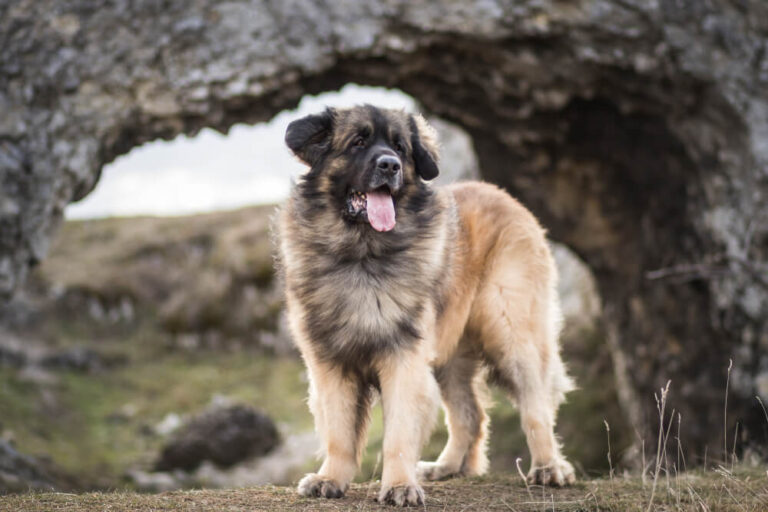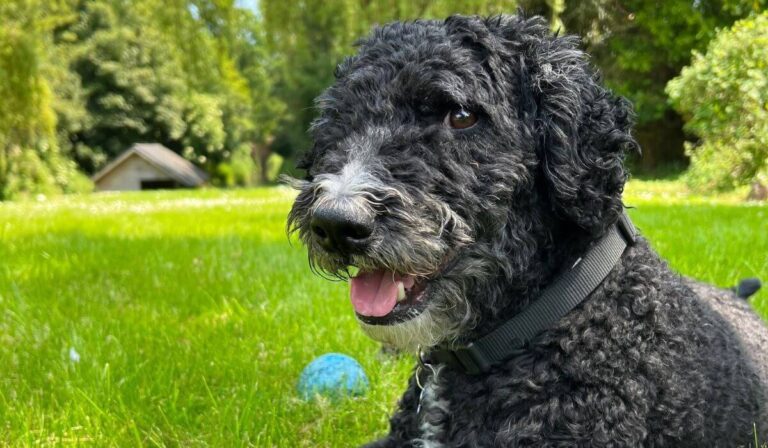Shetland Sheepdog Dog Breed: The Complete Guide to this Herding Breed
The Shetland Sheepdog, affectionately known as the Sheltie, is a beloved breed that captures hearts with its intelligence, loyalty, and striking appearance. As a dog expert, I’m excited to take you on a journey through the world of this remarkable herding dog. Whether you’re considering adding a Sheltie to your family or simply curious about the breed, this comprehensive guide will provide you with all the information you need.
Contents
Overview of the Shetland Sheepdog Breed

Origin and History
The Shetland Sheepdog’s story begins in the rugged Shetland Islands of Scotland. These small, hardy dogs were developed to herd and protect livestock on the windswept archipelago. Their ancestors likely include the Rough Collie and possibly small, spitz-type dogs brought to the islands by Norse settlers.
Shelties were bred to be compact and agile, capable of navigating the islands’ rocky terrain while herding sheep, ponies, and poultry. Their small size was also an advantage in an environment where resources were scarce.
Breed Recognition
The Shetland Sheepdog gained recognition from the English Kennel Club in 1909 and the American Kennel Club (AKC) in 1911. Initially known as the Shetland Collie, the name was changed to Shetland Sheepdog after objections from Rough Collie breeders. Today, the breed is recognized by major kennel clubs worldwide and ranks 25th in popularity among AKC-registered breeds.
Physical Characteristics

Size and Weight
Shelties are a small to medium-sized breed, known for their compact yet elegant build. According to AKC standards:
- Height: 13-16 inches at the shoulder
- Weight: 15-25 pounds
Males are typically slightly larger than females, but both share the breed’s characteristic proportions and grace.
Coat and Colors
One of the Sheltie’s most striking features is its luxurious double coat. The outer coat is long, straight, and harsh to the touch, while the undercoat is short, furry, and dense. This combination provides excellent protection against harsh weather conditions.
Shelties come in a variety of colors and patterns, including:
- Sable and white
- Tri-color (black, white, and tan)
- Blue merle
- Bi-black (black and white)
- Bi-blue (blue merle and white)
Distinctive Features
Shelties possess a refined, fox-like expression that sets them apart. Key features include:
- Almond-shaped eyes, typically dark except in blue merles
- Small, high-set ears that are erect when alert
- Long, wedge-shaped head with a rounded muzzle
- Plumed tail carried low when relaxed and curved upward when moving
Temperament and Personality
Intelligence and Trainability
Shetland Sheepdogs are renowned for their exceptional intelligence. They consistently rank among the top breeds in obedience and trainability. This keen intellect, combined with an eagerness to please, makes Shelties highly responsive to training.
As a Sheltie owner, you’ll find that these dogs excel in various canine activities, including:
- Obedience trials
- Agility courses
- Herding events
- Flyball
- Tracking
Their quick minds require regular mental stimulation to prevent boredom and potential behavioral issues.
Loyalty and Affection
Shelties form strong bonds with their families and are known for their unwavering loyalty. They’re affectionate and gentle, making them excellent companions for all age groups. However, they can be reserved with strangers, a trait that makes them good watchdogs.
While they’re not typically aggressive, Shelties may be vocal, using their distinctive “Sheltie bark” to alert you to potential threats or simply to express excitement.
Herding Instincts
Despite their small size, Shetland Sheepdogs retain strong herding instincts. This natural tendency can manifest in various ways:
- Circling family members or other pets
- Gently nipping at heels during play
- Attempting to “herd” moving objects like cars or bicycles
While charming, these behaviors may need to be managed through training and socialization, especially around young children or in urban environments.
Care and Maintenance
Grooming Requirements
The Sheltie’s beautiful coat requires regular maintenance to keep it healthy and mat-free. A consistent grooming routine should include:
- Brushing 2-3 times per week, more during shedding seasons
- Regular baths (every 6-8 weeks or as needed)
- Nail trimming every 3-4 weeks
- Dental care, including regular tooth brushing
Shelties are seasonal shedders, with heavier shedding occurring twice a year. During these periods, daily brushing may be necessary to manage loose fur.
Exercise Needs
Despite their small size, Shetland Sheepdogs are an active breed that requires regular exercise to maintain physical and mental well-being. Aim for:
- 30-60 minutes of daily exercise
- A mix of walks, playtime, and mental stimulation activities
- Opportunities for off-leash running in secure areas
Shelties excel in dog sports, which can be an excellent way to meet their exercise needs while strengthening your bond.
Nutritional Needs
A balanced diet is crucial for maintaining your Sheltie’s health and energy levels. Key considerations include:
- High-quality dog food appropriate for their age, size, and activity level
- Portion control to prevent obesity
- Fresh water available at all times
- Treats in moderation, not exceeding 10% of daily caloric intake
Consult with your veterinarian to determine the best feeding plan for your individual Shetland Sheepdog.
Health Considerations
Common Health Issues
While generally healthy, Shetland Sheepdogs can be prone to certain genetic health conditions:
- Hip dysplasia
- Eye problems (including Progressive Retinal Atrophy and Collie Eye Anomaly)
- Hypothyroidism
- von Willebrand’s Disease (a blood clotting disorder)
- Dermatomyositis (a skin and muscle inflammation)
Regular veterinary check-ups and genetic testing can help identify and manage these potential issues.
Lifespan
With proper care, Shetland Sheepdogs typically live between 12-14 years. Some may even reach 15 years or beyond, making them a long-term commitment for potential owners.
Preventive Care
To ensure your Sheltie lives a long, healthy life:
- Schedule regular veterinary check-ups
- Keep vaccinations and parasite prevention up-to-date
- Maintain dental hygiene through regular brushing and professional cleanings
- Monitor weight and adjust diet as needed
- Provide regular exercise and mental stimulation
Training and Socialization
Obedience Training
Shetland Sheepdogs excel in obedience training due to their intelligence and eagerness to please. When training your Sheltie:
- Use positive reinforcement techniques
- Keep training sessions short and engaging
- Vary exercises to maintain interest
- Be consistent with commands and expectations
Start training early and continue throughout your dog’s life to maintain good habits and strengthen your bond.
Agility and Herding Activities
Shelties often shine in agility competitions and herding trials. These activities provide excellent physical exercise and mental stimulation. Consider:
- Enrolling in agility classes
- Participating in herding instinct tests
- Setting up obstacle courses at home
These activities can help channel your Sheltie’s natural instincts and energy in a positive way.
Early Socialization Importance
Proper socialization is crucial for developing a well-rounded Sheltie. Expose your puppy to various people, animals, and environments from an early age. This helps prevent shyness or fearfulness in adulthood. Socialization should include:
- Positive interactions with different people and animals
- Exposure to various sounds, sights, and textures
- Calm introductions to new experiences
Remember, socialization is an ongoing process that should continue throughout your dog’s life.
Shetland Sheepdog as a Family Pet
Compatibility with Children
Shelties can make wonderful family pets, including homes with children. Their gentle nature and medium size make them suitable playmates for kids. However, it’s important to:
- Supervise interactions between dogs and young children
- Teach children how to respectfully interact with dogs
- Be aware of the Sheltie’s herding instincts, which may lead to nipping at heels
With proper training and supervision, Shelties can form strong, loving bonds with children of all ages.
Interaction with Other Pets
Shetland Sheepdogs generally get along well with other pets, especially when raised together. Their herding instincts may cause them to try to “herd” other animals, but this is usually harmless. To ensure harmonious relationships:
- Introduce new pets gradually and under supervision
- Provide separate feeding areas to prevent resource-guarding
- Ensure each pet has its own safe space
Many Shelties live happily in multi-pet households, forming close bonds with both canine and feline companions.
Living Space Requirements
Despite their energy levels, Shelties can adapt to various living situations, including apartments, provided their exercise needs are met. They do well in:
- Houses with fenced yards
- Apartments with access to regular outdoor activities
- Rural or suburban environments
Regardless of living space, Shelties need a safe, comfortable indoor area to rest and feel secure.
Choosing a Shetland Sheepdog
Puppy vs Adult Adoption
When adding a Sheltie to your family, consider whether a puppy or adult dog is right for you:
Puppies:
- Require more time and energy for training and socialization
- Allow you to shape their early experiences
- Have an unknown adult temperament
Adults:
- Often have basic training and established personalities
- May be calmer and less demanding
- Can be a good fit for first-time dog owners or busy households
Reputable Breeder vs Rescue
You can find Shetland Sheepdogs through breeders or rescue organizations:
Reputable Breeders:
- Provide health clearances for parents
- Allow you to meet the puppy’s parents
- Offer support throughout the dog’s life
Rescue Organizations:
- Give a home to a dog in need
- Often provide adult dogs with known temperaments
- May offer lower adoption fees
Research thoroughly and choose the option that best fits your lifestyle and values.
What to Look for in a Healthy Puppy
When selecting a Sheltie puppy, observe:
- Clear eyes without discharge
- Clean, odor-free ears
- Healthy coat without bare patches
- Proper bite alignment
- Alert, playful demeanor
- Comfortable interaction with littermates and humans
Ask for health clearances and vaccination records, and don’t hesitate to ask the breeder questions about the puppy’s parents and early socialization.
Fun Facts and Trivia
- Shelties are often mistaken for miniature Collies, but they’re a distinct breed with their own unique history and characteristics.
- The breed’s nickname “Toonie” comes from the Norwegian word for farm, “tun.”
- Shetland Sheepdogs have appeared in various films and TV shows, including “The Shaggy Dog” and “Lassie.”
- Despite their small size, Shelties were used to herd Shetland ponies as well as sheep.
- The breed’s intelligence has led to success in canine cognitive studies, with some Shelties demonstrating the ability to learn hundreds of words.
Frequently Asked Questions
Q: Are Shetland Sheepdogs good with children?
A: Yes, Shelties are generally excellent with children when properly socialized. Their gentle nature and medium size make them suitable family pets.
Q: Do Shetland Sheepdogs shed a lot?
A: Yes, Shelties have a double coat that sheds regularly, with heavier shedding twice a year. Regular grooming can help manage shedding.
Q: Are Shelties easy to train?
A: Absolutely! Shetland Sheepdogs are highly intelligent and eager to please, making them one of the easiest breeds to train.
Q: How much exercise does a Sheltie need?
Shelties require about 30-60 minutes of daily exercise, including walks, playtime, and mental stimulation activities.
Q: Do Shetland Sheepdogs bark a lot?
A: Shelties can be vocal and may bark to alert their owners to potential threats or out of excitement. Early training can help manage excessive barking.
Conclusion: Is the Shetland Sheepdog Right for You?
The Shetland Sheepdog is a remarkable breed that offers intelligence, loyalty, and beauty in a compact package. They excel as family companions, excelling in various dog sports and activities. However, their grooming needs, exercise requirements, and potential for vocalization mean they’re not the right fit for everyone.
If you’re prepared to provide regular grooming, ample exercise, and mental stimulation, a Sheltie can be an incredibly rewarding companion. Their loyalty, intelligence, and affectionate nature make them wonderful partners for active individuals or families who appreciate a dog that’s always eager to learn and please.
Remember, bringing a Shetland Sheepdog into your life is a long-term commitment. With proper care, training, and love, your Sheltie can be a devoted companion for 12-14 years or more, filling your days with joy, laughter, and unwavering friendship.
- Golden Retriever Pros and Cons: What Every Pet Parent Should Know - 15 September 2025
- Cane Corso Dog Breed: Health, Care, and Lifespan - 14 September 2025
- Catahoula Leopard Dogs: Description, Temperament, Lifespan, & Facts - 21 July 2025







